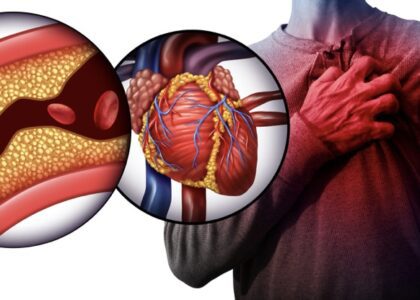According to a newspaper from Ming Pao, there are 3.5 million people with diabetes in Canada; the risk of diabetes among ethnic minorities, including the Chinese, is twice that of white people. The person in charge of the diabetes education program said that in the past six months, more than 600 referral cases regarding diabetes have been accepted, most of which are of Chinese descent. Today, CRC will inform you about diabetes.
Diabetes is a common metabolic disorder marked by elevated blood sugar levels. Diabetes puts people at risk for nerve damage, cardiovascular disease and other complications. The hormone insulin, which is generated by the pancreas, keeps blood glucose levels in your body at appropriate ranges. Diabetes is a widespread disease that affects both teenagers and adults all over the world. Diabetes affects one out of every eleven persons, with type II diabetes being the most common. [1] This post will teach you about the different types of diabetes mellitus, their symptoms and systems, their consequences, and pharmacological and non-pharmacological therapies.
Type one and type two diabetes are the two most frequent types of diabetes.
Type 1 diabetes
Also known as juvenile-onset diabetes, low insulin levels characterize type one diabetes. It is typically a genetic condition combined with genetic susceptibility and environmental factors that may show up early in life, affecting about 8% of individuals with diabetes.
Type 2 diabetes
Also known as adult-onset diabetes, type two diabetes is characterized by the diminished response of cells to insulin in combination with low insulin levels. Type 2 diabetes affects about 90% of people with diabetes and is associated with increased age, obesity and a sedentary lifestyle.
Gestational diabetes
Gestational diabetes is a type of diabetes that develops during pregnancy when your placenta produces hormones to sustain your pregnancy, making your cells more resistant to insulin; women may recover after birth. [2]
Prediabetes
Prediabetes is a condition of health that exists before a diagnosis of diabetes, where you have a higher than normal blood sugar level. Individuals with prediabetes may not show the typical signs and symptoms of diabetes but have elevated blood glucose levels. You are more likely to get stroke and cardiovascular disorders if you have prediabetes; preventing prediabetes from progressing to diabetes mellitus is possible with lifestyle changes. [3]
What are the complications of diabetes?
Diabetes can result in various complications.
1. Retinopathy is a significant complication of diabetes that can result in vision loss or blindness.
2. Cardiomyopathy, which is caused by diabetes, can lead to heart failure, myocardial infarction and even death.
3. Diabetes can cause life-threatening kidney disease.
4. Diabetes can induce atherosclerosis, leading to brain damage; a lack of blood supply can lead to cerebral hemorrhage, stroke and other complications.
5. Diabetic foot is a foot infection caused by vascular disease, which arises when high blood sugar destroys the nerves and blood arteries in the feet. It is one of the most dangerous complications of diabetes. If it is not treated, it will slowly evolve into ulcers, redness, swelling and pus. In severe cases, an amputation may be required.

What are the signs of diabetes?
Unexpected weight loss, recurrent infections, weariness, dry mouth, aching and numb feet, itching, black spots on the skin, and vision loss are all warning indications of diabetes. [4]
Treatment for type one diabetes
Insulin therapy is used to treat type 1 diabetes; however, with the emergence of insulin resistance, health professionals are also prescribing non-insulin medications.
Metformin
Metformin is a biguanide medication. Insulin resistance is reduced and insulin-secreting cells are protected from harm. Metformin helps obese people lose weight by promoting lipid metabolism and controlling blood sugar levels.
SGLT-2 Inhibitor
Sodium-glucose co-transporter 2 (SGLT-2 Inhibitor) inhibitors prevent glucose from being absorbed by the kidneys and promote glucose excretion in the urine. Insulin-producing cells are also protected from injury and the medications help them regenerate. SGLT-2 inhibitors can lower blood pressure and promote weight loss in obese patients. The most common SGLT-2 inhibitors drugs are Invokana (canagliflozin), Forxiga (dapagliflozin) and Jardiance (empagliflozin).
GLP-1 agonist
SGLT-2 Inhibitor receptor agonists, such as glucagon-like peptide 1 (GLP-1 agonist) receptor agonists, prevent insulin-producing cells from dying. These medications are approved for usage in both oral and injectable forms. The injectable version of Ozempic (Semaglutide) and its oral equivalent, Rybelsus, are the most commonly used GLP-1 agonists.
GLP-1 receptor agonists and SGLT-2 inhibitors also treat and manage type 2 diabetes. [5]
Treatment for type two diabetes
Pharmacological treatment and medications used to treat and manage type 2 diabetes include the following.
Metformin
Metformin is a well-tolerated first-line medication for the treatment of type 2 diabetes. Metformin inhibits the conversion of lactate to glucose, reducing blood sugar levels.
Insulin secreting agents
Insulin secreting agents include sulfonylureas, which activate insulin-producing cells in the pancreas. On the other hand, these medications can readily cause hypoglycemia and should be used with caution. Common medications are Diamicron (gliclazide) and Diabeta (Glyburide).
Alpha-glucosidase inhibitors
By inhibiting enzymes required for carbohydrate digestion, alpha-glucosidase inhibitors delay the absorption and digestion of carbs in the small intestine. In Canada, Glucobay is the only drug of its type available.
Thiazolidinedione
Thiazolidinedione increases glucose consumption and blocks glucose synthesis in the liver, muscle and adipose tissue cells. [6] The drugs available in Canada are Actos (Pioglitazone) and Avandia (Rosiglitazone).

When do I need immediate medical attention?
A hyperglycemic crisis is a medical emergency characterized by higher glucose levels (>33.3 mmol/L) and ketone bodies; diabetes patients’ mental health might be affected by high blood glucose levels and dehydration. Diabetic coma can also be caused by hyperglycemia. Symptoms and signs of hyperglycemia include increased thirst, headache, blurred vision, increased heart rate, sunken eyes, and a drop in blood pressure. Likewise, hypoglycemia (<4.0 mmol/L) in diabetic patients is a medical emergency caused by taking too much diabetes medicine. Hyperglycemia and hypoglycemia both necessitate prompt medical treatment. Confusion, weariness, increased perspiration, hunger, and paralysis are among the symptoms and indicators of hypoglycemia. [7-9]
The following is a patient’s story. Mr. Tang often works overtime without having much time dedicated to exercising, drinking, eating unhealthy food and staying up late. Mr. Tang started getting symptoms of frequent thirst, polyuria and persistent hunger but he thought it was due to a urinary system problem. When his symptoms did not improve, he went to his family doctor who diagnosed him with type two diabetes after his blood sugar level reached 15.1 mmol/L.
Paying attention to your diet
The phrase “you are what you eat” means that to be healthy and active, you need to eat nutritious food. As nutrition plays an important role in living a healthy lifestyle, you must consider what you eat, how much you eat and when you eat to keep your blood sugar in the range recommended by your doctor. Mr. Tang sought the advice of his dietician, who helped him develop a healthy eating plan. By eating the foods recommended and calculating the total calories in his meals, Mr. Tang was able to control his blood sugar levels successfully.
Exercising
Due to Mr. Tang’s unhealthy eating habits and lack of exercise, Mr. Tang has central obesity, a condition in which excess abdominal fat has piled up around the stomach and abdomen, which may result in a number of health problems and has been connected to cardiovascular disease and other metabolic and vascular illnesses. CRC’s Dr. Peter Ling recommends exercising 30 minutes a day, five times a week, totalling 150 minutes of exercise a week. He recommends aerobic exercises like jogging, walking, running, cycling and swimming.
Regularly monitor blood sugar
Mr. Tang started regularly monitoring his blood sugar which helped him track his progress and allowed him to detect when his blood sugar levels were high or low prior and after eating, taking his medication and exercising. Blood sugar monitoring is a crucial tool for treating diabetes and preventing complications and should be a part of your daily routine. Many blood sugar monitoring devices are available to assist you in measuring blood sugar more simply and rapidly, making it easier to include blood sugar monitoring into your daily routine.

Results
Mr. Tang’s hard work paid off and was able to successfully lower his blood sugar from 15.1mmol/L to 5.6mmol/L. Lowering your blood sugar is not as challenging as you may think. Hope every diabetic patient can improve like Dr. Tang.
CRC Health Centre has a diabetes clinic and a number of professionals who can help you. Please ask your GP to refer you to the following doctors.


Dr. YD You Dr. Peter Ling
(English and Mandarin) (English, Mandarin and Cantonese)
1. https://www.ncbi.nlm.nih.gov/books/NBK551501/
2. https://www.ncbi.nlm.nih.gov/books/NBK568014/
3. https://www.ncbi.nlm.nih.gov/books/NBK459332/
4. https://www.ncbi.nlm.nih.gov/pmc/articles/PMC4311308/
5. https://www.ncbi.nlm.nih.gov/pmc/articles/PMC5903388/
6. https://www.ncbi.nlm.nih.gov/pmc/articles/PMC5027002/
7. https://www.ncbi.nlm.nih.gov/pmc/articles/PMC3756609/
8. https://www.ncbi.nlm.nih.gov/books/NBK279052/
9. https://www.ncbi.nlm.nih.gov/books/NBK534841/






